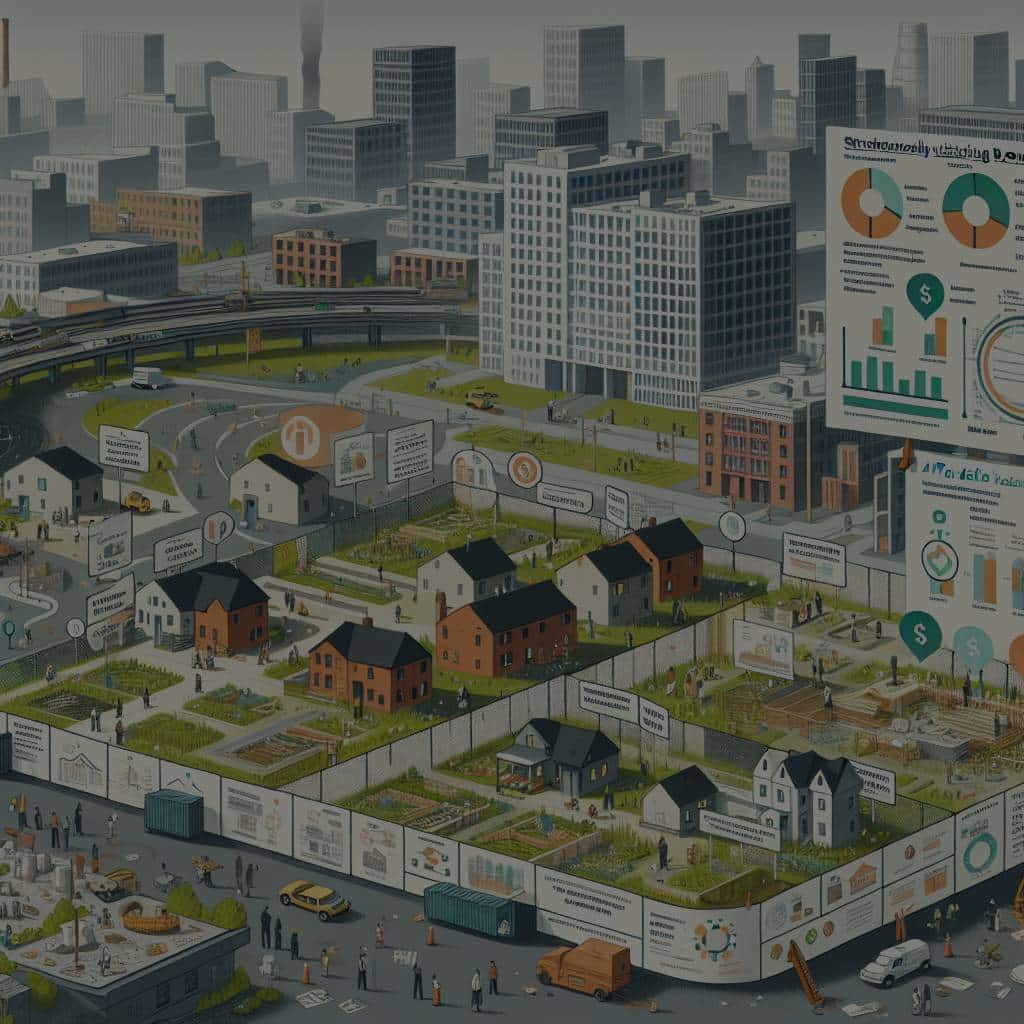How to Strategically Utilize Brownfield Sites for Affordable Housing Developments?

In the pursuit of sustainable urban planning and community development, one crucial aspect needs attention: the potential of brownfield sites. These sites, previously used for industrial or commercial purposes, have been left untapped over the years. Their redevelopment, however, can serve as a boon for affordable housing projects, a sector often in dire need of land and funding. This article details the process and the potential benefits of redeveloping brownfields into housing projects. It will also offer insights on how state and local governments can strategically plan and implement such projects.
Understanding the Potential of Brownfields
First off, brownfields are abandoned, idled, or underused industrial and commercial facilities where expansion or redevelopment is complicated by real or perceived environmental contamination. In many communities, these sites pose economic, environmental, and social challenges. They lie barren, often becoming eyesores and contributing to urban decay.
Sujet a lire : What Are the Challenges of Developing Real Estate in Coastal Erosion Zones?
Yet, there’s hidden potential and value in these sites. With initial environmental remediation and cleanup, brownfields can be revived and repurposed. Turning these abandoned areas into affordable housing projects not only addresses property blight but also serves a pressing need in many communities: the lack of affordable homes for low and middle-income families.
Redeveloping brownfields into housing properties is not just about building homes. It’s about creating vibrant communities where people can live and thrive.
A lire également : How to Evaluate the Impact of High-Speed Rail Developments on Local Property Prices?
The Process of Brownfield Redevelopment
Brownfield redevelopment involves several steps: environmental assessment, remediation, planning, and development. To start, an environmental assessment is necessary to determine the extent of contamination and the cleanup required. This is usually done with the help of environmental consultants.
The next stage is remediation, the cleanup and rehabilitation of the site. This is a critical phase that requires considerable funding and technical expertise. The process must comply with environmental standards to ensure that the site is safe for future inhabitants.
After remediation, the site needs to go through a careful planning process. This involves the design of the housing project, infrastructure needs, and the provision for amenities and facilities that would make the community livable and thriving.
The final step is development, where the actual construction of the housing units takes place.
Funding and Economic Considerations
The cost of brownfield redevelopment can be hefty, given the need for environmental cleanup and the challenges that come with these sites. However, several funding sources can alleviate these costs.
Firstly, there are federal and state programs aimed at supporting brownfield redevelopment. These programs offer financial assistance in the form of grants, low-interest loans, and tax incentives. It’s crucial to take advantage of these programs to offset the high cost of redevelopment.
Moreover, brownfield redevelopment can bring substantial economic benefits. It can spur local economic growth by creating jobs and stimulating investment. It also increases property values, which in turn boosts local property tax revenues. These economic gains can be reinvested into the community, further enhancing its development.
Community Engagement in Brownfield Redevelopment
Successful brownfield redevelopment necessitates community engagement. It’s essential to involve the local community, not just in the planning stages, but throughout the project.
Community engagement ensures that the redevelopment project aligns with the needs, preferences, and aspirations of the local people. It fosters ownership and support for the project, which can be beneficial in securing necessary approvals and overcoming potential obstacles.
Furthermore, community participation can strengthen the social fabric of the community. It provides opportunities for residents to come together, collaborate, and contribute to a shared vision.
Strategic Planning for Brownfield Redevelopment
Strategic planning is essential in brownfield redevelopment. It’s not just about transforming a contaminated site into a housing project. It’s about planning for a vibrant, livable community.
This entails considering accessibility to public transportation, proximity to employment centers, availability of amenities and facilities, and the integration of green and open spaces. It also involves designing homes that are not just affordable but also sustainable and resilient.
Moreover, strategic planning requires the alignment of the redevelopment project with broader urban development and housing policies. This way, brownfield redevelopment becomes an integral part of city or regional planning, contributing to holistic urban growth and development.
In conclusion, brownfield redevelopment presents a viable option for affordable housing development. It’s not without challenges, but with strategic planning, sufficient funding, community engagement, and a commitment to environmental and social sustainability, these projects can turn liabilities into assets, breathing new life into communities while addressing the pressing need for affordable homes.
Economic Benefits and Economic Development Through Brownfield Redevelopment
Enterprises, policymakers, and concerned citizens are increasingly recognizing the economic potential embedded in brownfield sites. Undertaking a brownfield project is not merely about land rehabilitation; it’s a pathway towards significant economic development and community revitalization.
Firstly, the process of brownfield redevelopment itself stimulates local economies. From the site survey to the final construction, numerous jobs are created for environmental consultants, contractors, architects, builders, and other professionals. According to certain case studies, the environmental employment generated by brownfield projects can be substantial, with every acre of rehabilitated land creating an average of 10 jobs.
Secondly, the transformation of dilapidated and underused land into vibrant housing communities can dramatically increase property values in the surrounding area. This leads to an increase in property tax revenue, providing a much-needed boost to local government coffers. These additional funds can be channeled into public services, infrastructure, and other community development programs.
Thirdly, the redevelopment of brownfield sites can attract new businesses and investment, further stimulating economic growth. The availability of affordable housing in areas close to public transportation and amenities can be an attractive proposition for businesses looking to set up shop, leading to an even greater economic ripple effect.
The cumulative impact of these factors can breathe new life into communities, turning underutilized and contaminated sites into thriving hubs of economic activity and community living.
Conclusion: Brownfields as a Catalyst for Smart Growth and Affordable Housing
In the recent past, brownfield sites were seen as a blight on local communities, contributing to urban decay and environmental contamination. However, the tide is turning, with more and more communities recognizing the potential of these sites as catalysts for smart growth and affordable housing.
The benefits of brownfield redevelopment are manifold. From an environmental perspective, it promotes the remediation and cleanup of contaminated sites, contributing to a cleaner, healthier urban environment. Economically, it can stimulate job creation, increase property values, drive investment, and boost local tax revenues.
Furthermore, the transformation of brownfield sites into affordable housing developments addresses a critical need in many communities. By creating quality, affordable homes in areas close to public transportation and amenities, we can ensure that more people have access to the opportunities they need to thrive.
However, to fully harness the potential of brownfield sites, strategic planning and community engagement are key. The redevelopment process must be integrated with broader urban planning and housing policies. In addition, it should be guided by the principles of sustainable and resilient design.
In short, redeveloping brownfields into affordable housing is not just a strategy for tackling urban decay and housing scarcity. It’s a powerful tool for driving sustainable urban development, promoting economic growth, and building vibrant, inclusive communities. With the right approach, these once neglected sites can become a cornerstone of smart, sustainable growth for our cities and towns.
